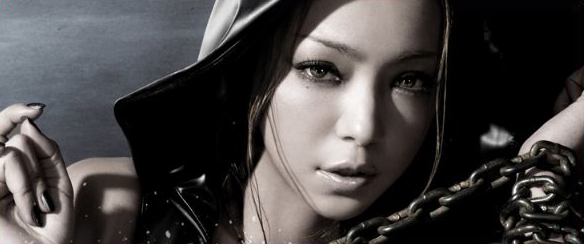The History Channel will air a program this evening titled “WWII in HD”. Rare footage, and personal accounts, will trace the stories of 12 soldiers throughout the course of the war. The program will be a 10-part series, airing from Sunday-Thursday. Given the fact that Veterans Day was just celebrated in America on Nov. 11th, and Armistice Day was celebrated all around the world (which technically commemorates the end of hostilities in WWI) it seems just as good a time as any to remember the sacrifices the Greatest Generation made for the sake of humanity.
Make no mistake, the Nazi war machine was the most formidable fighting force the world has ever seen. It took what would become two world superpowers (i.e. USA and USSR) and two well-established global empires (i.e. Britain and France) to defeat Hitler’s mechanized hordes and liberate virtually the whole of Europe from his iron rule. Hitler annexed the largest land empire ever seen in Europe, in the shortest amount of time. He conquered more land than Charlemagne, more than Napoleon, more than the Caesar’s, etc… and could have annexed even more had he not been such a self-destructive, hot-headed, stubborn, psychopathic, megalomaniac, prone to folly and blunder. Borders that had stood for centuries were smashed thru with ease, and countless age-old armies were completely annihilated in the course of weeks and months. Truth be told, the Nazi victories in Europe were some of the most remarkable victories in military history. To give you an idea, in about a month the whole of the Polish army was obliterated; 66,000 dead, 133,700 wounded, and 694,000 captured. In one month and 15 days, the French army, thought by many at the time to be the most powerful army in the world, was altogether wiped out; 360,000 dead and wounded, and 1.9 million captured. In 18 days of German Blitzkrieg, the Belgian army ceased to exist; 222,443 casualties, and 200,000+ captured. Over the course of roughly 6 months, 802,191 Soviets were killed, 3 million were wounded, and another 3.3 million were captured during Operation Barbarossa (translation: Operation Redbeard, so named for the charismatic Holy Roman Emperor Friedrich Barbarossa, who had fought many Crusades against the Slavic and Baltic peoples). These jaw-dropping numbers were only the results of single battles and offensives. In total, about 3.5% – 4% of the world’s population at the time was killed in the war that Hitler started (62 mil – 78 mil), and victory was by no means a guarantee for the Allies. There were countless instances throughout the war in which world history could’ve turned on a dime (instances I will discuss in detail in later posts).
It may be a decades-old, silly-sounding cliché, but if it wasn’t for the Allied Forces who stormed the bloody beaches of Normandy, and snatched victory from defeat in the bombed out ruins of Stalingrad, we all would be speaking German right now, quite literally. The younger generations casually blow this saying off, as if it is an exaggeration, but the possibility was very real. In the post-war world, English, the language of the Western victors (i.e. USA and the UK), became the formal and informal language of the world. Everything from global trade to air traffic control is conducted in English, and had Germany emerged from WWII as the dominant Western power, there is no doubt international treaties would be dotted with umlauts and oil would be traded in Reichsmarks, rather than American dollars.
To give you an idea of the kind of enemy America faced, let’s take a look at the absolutely stunning casualty numbers. During America’s first major offensive against Germany in the previous war, WWI (i.e. the Battle of Argonne Forest), America suffered 117,000 casualties, in a little over two weeks worth of fighting. To put this into context, America only lost 172 men during the 2003 Invasion of Iraq, in roughly the same amount of time fighting. The German army was very well trained, equipped, disciplined, and technologically advanced, and could match, and even outmatch Anglo-American ingenuity and innovation in many aspects of warfare. Comparing Middle-Eastern despots, like Saddam Hussein, to Hitler doesn’t pay the respects due to the millions of men, women, and children who gave their lives to defeat him. Fighting Hitler, and Nazi Germany, was essentially like fighting an aggressive, ruthless, and sadistic version of ourselves; an industrialized, 1st world death machine, armed to the teeth, steeped in warrior culture, and hell bent on domination and dominion. On D-Day alone (i.e. a single day) the United States lost exponentially more men (2,499) than we’ve lost in the entire Afghan War over the course of 8 years (916). The Germans killed over 26 million Soviet citizens, military and civilian, throughout the course of the war on the Eastern Front. The USSR lost more men in WWII than America has lost in battle throughout all of the wars she’s ever fought, collectively, which includes both WWII and Civil War fatalities; soldier and civilian. Keep in mind, I am not trying to minimize the sacrifices of our current veterans serving overseas in any way. I am only using them as an example to embellish the achievements of the Greatest Generation and contrast the sheer, mind-boggling size of the sacrifice they made. Losing 2,499 Americans over the course of a day (8 hrs or so) is incomprehensible to most Americans today, yet that was the cost of establishing a single beachhead in France; a mere fraction of the cost it would take to break the Nazi stranglehold over Europe and loosen Japan’s imperial grip over Asia.
Defeating Hitler cost the world a massive loss of life, unparalleled in world history, yet that was only one of the wars going on at the time. On the other side of the globe, the Allied Forces were embroiled in a vicious war against Hitler’s Axis allies in Asia, Imperial Japan. Imperial Japan was an advanced, militaristic, industrialized nation, much like Germany, that had built up a massive armed force in the years leading up to the war. The Imperial Fleet alone rivaled that of the legendary British Royal Navy, and the Japanese air force was just as advanced, if not more so, than any air force in the world, dominating the skies of Asia virtually unchallenged. Like Nazi Germany, Japan’s ground forces were known to be exceedingly brutal in their pursuit of conquest, and were seemingly just as fanatical in their cause as the Nazis were, routinely fighting to the last man, taking no prisoners, and launching suicidal attacks when all else had failed. A warrior culture had fomented in Japan for ages, and old traditions were hard to break on the isolated island country. Plus, one must keep in mind that fighting an archipelago empire such as Japan was all the more costly because it required multiple d-day landings on tiny island beaches where all of the defending forces were concentrated. Although the battle lasted for a little over six months, 7,100 Allied soldiers were lost on Guadalcanal, 6,821 on Iwo Jima in about a month, and 2,949 were lost on Saipan in about 3 weeks… and that’s just to name of few of the horrific battles in the Pacific. To avoid Operation Downfall (i.e. the Invasion of Japan), which would’ve required multiple d-day landings on multiple fronts, and islands, against a die-hard, desperate enemy fighting to protect their homes, families and honor, undoubtedly costing hundreds of thousands, if not millions of American lives, America became the first, and only country to ever drop an atomic bomb on another country. As ungodly as the atomic bombings of Hiroshima and Nagasaki were, they were not anywhere near as costly as the fire-bombing of Tokyo. It is uncertain how many people were killed in the bombings of Tokyo but the city was one of the most densely populated in the world and was largely built of flammable wooden materials. Some estimates have placed the death toll as high as 1.5 million, whereas others have placed it as low as 150,000, but the latter number is highly unlikely given the fact that over 100,000 people were reportedly killed during the raid conducted on the night of March 9th-10th, 1945 alone. In total, over 50% of the city was destroyed, and keep in mind Tokyo was only one of the many cities Allied bombers were targeting in the country.
When commemorating the sacrifices of the Greatest Generation, remember that the men who fought the Axis Powers had no idea they were going to win the war when they left their homes and families and set out to fight the dark forces of tyranny. Hitler had controlled Europe for 4 long years when the Soviets defeated the Blitzkrieg at Stalingrad, and the Allies stormed the beaches of Normandy, and before either of those milestones took place, and even for some time after they did, Hitler’s dreams of a “thousand year Reich” seemed to be all but set in stone. Average Americans; teachers, doctors, lawyers, farmers, clerks, engineers, machinists, laborers, postmen, bus drivers, etc… left their simple and peaceful lives behind to combat a savage machine built of fire and steel and fueled by the blood of millions of innocent people. Grocers and retail salesmen suddenly found themselves in the hedgerows of France face-to-face with the ruthless, battle-hardened Waffen-SS, and accountants and stockbrokers abruptly took to the skies over the Pacific to engage the vastly more experienced and tested Japanese Zeros in dogfights. The entire country banded together to win the war. All able men were conscripted to fight, and the woman on the home front worked their jobs to keep the economy going while they were gone. Operations of entire industries were diverted to the war effort, and the civilian population was forced to ration food and other materials for the good of their fathers, sons, and brothers dying on the battlefields. Total war engrossed the Western World, and our very livelihood depended on the outcome of the campaign. For some demographics, such as the Jews, Russians, Chinese, etc… their very survival as a people depended on the outcome of the war.
No matter which way you look at it, WWII was the most pivotal, and catastrophic event in human history. The debt of gratitude we owe to those who gave their lives, and bodies, for the cause is unfathomable.
“Never was so much owed by so many to so few” — Sir Winston Churchill
In later posts I shall discuss certain aspects of the war in much greater detail, but for my first entry, I’d simply like to say thank you to all of those aging vets, and their deceased brothers-in-arms, who answered the call when the world needed them the most, and saved humanity from a new Dark Age.
“Hitler knows that he will have to break us in this Island or lose the war. If we can stand up to him, all Europe may be freed and the life of the world may move forward into broad, sunlit uplands. But if we fail, then the whole world, including the United States, including all that we have known and cared for, will sink into the abyss of a new Dark Age made more sinister, and perhaps more protracted, by the lights of perverted science. Let us therefore brace ourselves to our duties, and so bear ourselves, that if the British Empire and Commonwealth last for a thousand years, men will still say, ‘This was their finest hour’”. — Sir Winston Churchill




 Lee, J. Y. K. (2008). The piano teacher: A novel. New York: Viking Penguin. 978-0-00-728638-6
Lee, J. Y. K. (2008). The piano teacher: A novel. New York: Viking Penguin. 978-0-00-728638-6

















